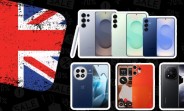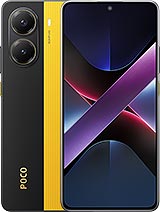Are foldable phones better for multimedia? Here is how the Galaxy Z Fold3 and Z Flip3 stack up

The history of widescreen is a fascinating tale of film makers trying to impress their audience and later to try and claw back audience members from those new-fangled “television sets”. Early TVs settled on a 4:3 aspect ratio, which was the most common choice for movies too. But why go to the movies when you can stay at home?
This lead film makers to start using wider and wider aspect ratios – which they argued were more immersive and it just so happened that building such wide CRTs was difficult if not impossible. So, when movies were viewed at home they were either cropped (losing a significant part of the image) or letterboxed with black bars. Both were an inferior experience, cementing the cinema as the one true way to see movies.
All of this is ancient history, a century old at this point. Except we’re still struggling with aspect ratios. 16:9 became the standard during the transition to High Definition video and in a few years touchscreen phones with 16:9 screens would arrive – a perfect fit!


Samsung Galaxy Z Fold3 5G and Z Flip3 5G: folded and unfolded
Except it wasn’t. Makers wanted to keep growing phones, but they couldn’t make them wider, so they made them taller instead. And now that foldable phones are a thing, things are even more convoluted. Some unfold to reveal a big, squarish screen, while clamshells tend to have extra long inner screens.
Take the Samsung Galaxy Z Fold3 5G for example. When unfolded, it has a large 7.6” screen. However, the aspect ratio is an odd 11.2:9, which is close to square. That’s great for documents and reading in general, quite good for, say, 3:2 and 4:3 photos. But 16:9 videos are a poor fit.
And content creators didn’t stop at 16:9 either. In the digital era we have all sorts of aspect ratios: 1:1 for Instagram photos, 4:3 for photos from phones and older TV shows, 16:9 for new TV shows, though 18:9 seems to be preferred for Netflix content, and movies tend to be even wider.
The Samsung Galaxy Z Flip3 5G is fairly compact when closed (if you don’t mind the thickness), but can unfold to a 6.7” screen. The screen has one of the widest aspect ratios on the market, 22:9, which makes it better-suited watching videos, less so for browsing photos.
Below is the rundown on some key display specifications on the two foldables from Samsung and two flagship alternatives with a conventional design:
| Video surface area (in cm²) for a given aspect ratio | ||||
| Screen info | Galaxy Note20 Ultra | Galaxy Z Fold3 | Galaxy S21 Ultra | Galaxy Z Flip3 |
| Diagonal (in) | 6.9" | 7.6" | 6.8" | 6.7" |
| Aspect ratio | 19.3:9 | 11.2:9 | 20:9 | 22:9 |
| Width (cm) | 15.81 cm | 15. cm | 15.78 cm | 15.74 cm |
| Height (cm) | 7.37 cm | 12.01 cm | 7.1 cm | 6.44 cm |
| Area (cm²) | 116.61 cm² | 180.06 cm² | 112.09 cm² | 101.36 cm² |
| Horizontal resolution (px) | 3088 px | 2208 px | 3200 px | 2640 px |
| Vertical resolution (px) | 1440 px | 1768 px | 1440 px | 1080 px |
| PPI | 496 ppi | 374 ppi | 515 ppi | 426 ppi |
So, here’s a question. The Z Fold3 has a large but squarish 7.6” screen. The Galaxy S21 Ultra 5G has a 6.8” 20:9 screen. If you were to watch a 16:9 video, which screen will give you the bigger picture? Assuming no cropping, that is. And wouldn’t you be better off with the Z Flip3, since the Fold will waste most of its screen on letterboxing?
First, what is letterboxing? It is the addition of black bars to the top and bottom of a video to adjust its aspect ratio to match that of the screen. When the black bars are added to the left and right side, it is called pillarboxing. Here’s a 16:9 video playing on a Z Fold3 (where it is letterboxed) and on the Note20 Ultra (where it is pillarboxed).

As you can see, both have parts of their screen that are left blank. Which offers the bigger picture when all is said and done? We pulled out a spreadsheet and did some calculations for various aspect ratios.
The chart below shows the surface area (in cm²) covered by the video on each display. Note that we ignored the rounded corners, which are rarely an issue (for most ratios they are covered by the black bars). We did also ignore the curved screens of the S and Note phones, but, again at some ratios those are showing black, so you don’t lose any of the picture.

It turns out that the Galaxy Z Fold3 displays a significantly larger picture all the way to 16:9. At 18:9 it is effectively even with the Note20 Ultra and loses to its widescreen siblings for wider videos. The ultra wide screen of the Galaxy Z Flip3 causes it to struggle with narrower content, but at 20:9 and wider it gets pretty close.
Here is a table with the video sizes for each phone for each aspect ratio (again, we ignored the rounded corners, so the results may not be 100% accurate in some cases).
| Aspect ratio | Galaxy Note20 Ultra 5G | Galaxy S21 Ultra 5G | Galaxy Z Fold3 5G | Galaxy Z Flip3 |
| 1:1 | 54.38 cm² | 50.44 cm² | 144.17 cm² | 41.47 cm² |
| 4:3 | 72.5 cm² | 67.25 cm² | 168.65 cm² | 55.29 cm² |
| 3:2 | 81.57 cm² | 75.66 cm² | 149.91 cm² | 62.2 cm² |
| 16:9 | 96.67 cm² | 89.67 cm² | 126.49 cm² | 73.72 cm² |
| 18:9 | 108.76 cm² | 100.88 cm² | 112.43 cm² | 82.93 cm² |
| 20:9 | 112.53 cm² | 112.09 cm² | 101.19 cm² | 92.15 cm² |
| 21:9 | 107.17 cm² | 106.75 cm² | 96.37 cm² | 96.75 cm² |
While those large black bars on the Samsung Galaxy Z Fold3 look wasteful, this is one of the best pocketable video players that money can buy (okay, a lot of money, but still). And if you want to look at photos, there’s barely any competition that isn’t a tablet (practically none that you can buy in the West).
The Galaxy Z Flip3 folds down to 86.4 x 72.2 x 15.9-17.1 mm and yet it comes close to offering the same video experience as a phone that measures 165.1 x 75.6 x 8.9 mm at all times. It does fairly well for photos too, even though they tend to be far off its native aspect ratio. And those you can view in Flex mode, which gives you one half of the screen (11:9) for the photos, the other half for controls.
That is the magic of foldable phones – they make large screens pocketable, sometimes even compact. It is a trade-off, you get double the screen size at the cost of double the thickness. And some unusual aspect ratios, but as we can see in the chart above, the foldables more than make up for that.
Related
Reader comments
- Anonymous
- 26 Oct 2022
- wiX
This is why I'm avoid buying any foldable large screen phone until the triple folding display is official or new foldable form factor with unfold wide screen, because of the aspect ratio are way too short that multimedia can't even fit espe...
- geek-a-contra
- 22 Sep 2021
- JEF
man, i have colleagues using ms duo's on daily, business basis. in engineering we need productivity tools, not fancy, good looking, 200mb frontal camera, +120hz refresh and stuff. the complains are related mainly, for the time being, to not suff...
- AnonD-762416
- 21 Sep 2021
- Sec
You don't have to be psychic to know Surface Duo is dumb. You only need half of your senses partially functioning.








 Samsung
Samsung Xiaomi
Xiaomi Samsung
Samsung Sony
Sony Xiaomi
Xiaomi


